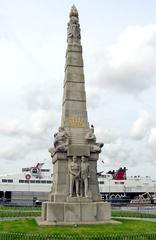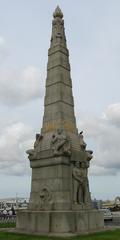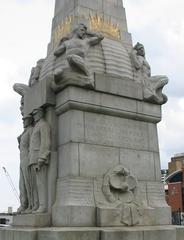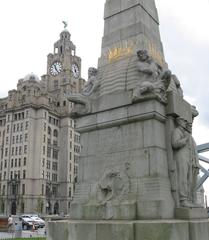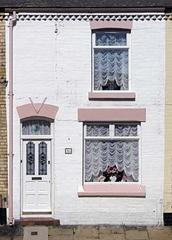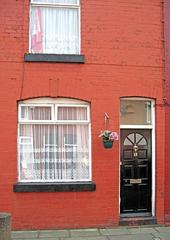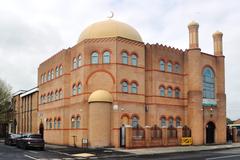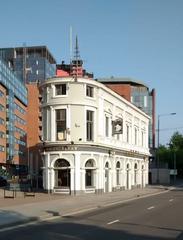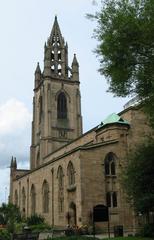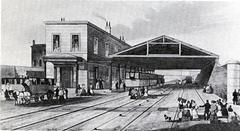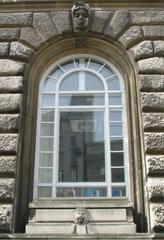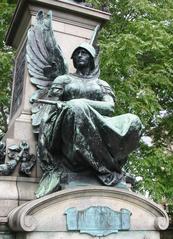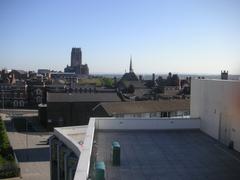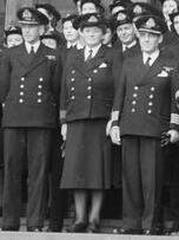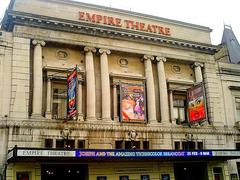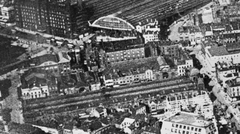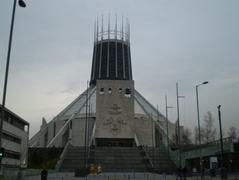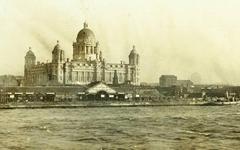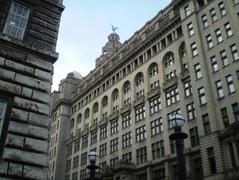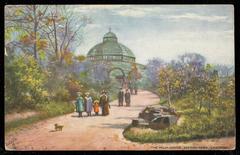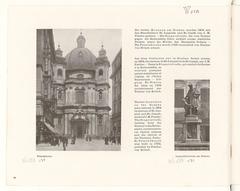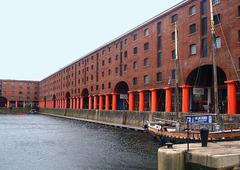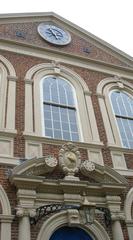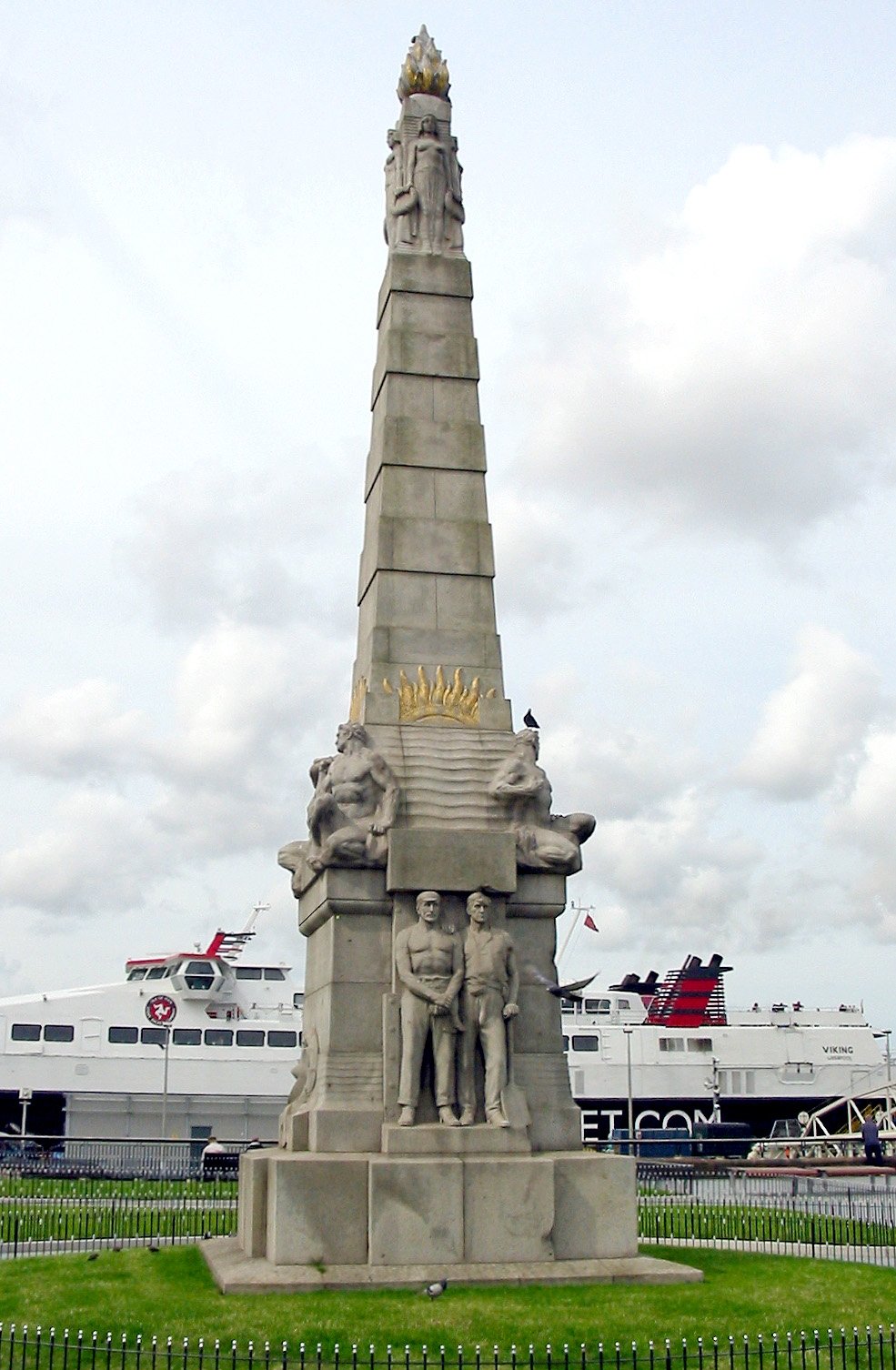
Memorial To The Engine Room Heroes Of The Titanic
Titanic Engine Room Heroes Memorial Liverpool: Visiting Hours, Tickets, and Guide
Date: 14/06/2025
Introduction
The Memorial to the Engine Room Heroes of the Titanic, located on Liverpool’s Pier Head waterfront, is a powerful tribute to the 244 engineers, firemen, trimmers, and greasers who lost their lives during the RMS Titanic disaster in April 1912. This remarkable monument honors the often-overlooked working-class crew members who displayed extraordinary bravery, keeping the ship’s engines running to facilitate evacuation during the tragedy. Liverpool’s deep connection to the Titanic—being the home port of the White Star Line—makes this memorial a central landmark for the city’s maritime history and heritage.
This comprehensive guide explores the memorial’s origins, artistic features, historical context, and practical information, including visiting hours, accessibility, ticketing, and nearby attractions. Whether you’re a maritime history enthusiast, a visitor to Liverpool, or someone interested in the human stories behind the Titanic, this guide will ensure a meaningful and memorable visit (Liverpool Picturebook, Historic England, Victorian Web).
Table of Contents
- Origins and Historical Context
- Artistic and Symbolic Features
- Visiting Information: Hours, Tickets, and Accessibility
- Directions and Tips for Getting There
- Nearby Attractions and Suggested Itineraries
- Special Events and Guided Tours
- Frequently Asked Questions (FAQ)
- Conclusion
- References & Further Reading
Origins and Historical Context
Creation of the Memorial
In the aftermath of the Titanic disaster, Liverpool’s maritime community and the general public sought to honor the engine room crew, whose selfless actions significantly extended evacuation efforts. A public subscription fund, supported by trade unions, shipping companies, and citizens, enabled the commissioning of the memorial. A design competition in 1913 was won by Sir William Goscombe John, whose vision powerfully symbolized the endurance and sacrifice of the engine room staff (Historic England).
Construction began in 1914 but was delayed by World War I. Ultimately, the memorial was unveiled on April 30, 1916, in a ceremony attended by local dignitaries and relatives of the Titanic crew (Liverpool City Council).
Broader Significance
While originally dedicated to the Titanic’s engine room heroes, by 1916 the memorial’s scope had broadened to honor all marine engine room workers who lost their lives at sea, particularly given the increasing maritime casualties of World War I (Titanic Memorial). This rare focus on working-class heroism marked a shift in early 20th-century commemoration, elevating the dignity of industrial laborers who formed the backbone of Liverpool’s seafaring identity.
Artistic and Symbolic Features
The memorial is a striking example of early 20th-century monumental sculpture. Key features include:
- Central Bronze Figure: A muscular stoker, over 14 feet tall, holding a shovel to represent the arduous labor of engine room workers.
- Granite Plinth: The plinth displays relief panels showing engineers at work, allegorical figures representing Earth, Air, Fire, and Water, and grieving families.
- Gilded Torch: Crowning the obelisk, the torch symbolizes the enduring spirit and triumph of steam power.
- Allegorical Maidens: Four female figures at the base personify the moods of the sea (Victorian Web).
These elements collectively honor the courage, sacrifice, and resilience of those who kept the Titanic’s heart beating in its final hours.
Visiting Information: Hours, Tickets, and Accessibility
- Location: St Nicholas Place, Pier Head, Liverpool, L3 1QW, United Kingdom
- Hours: Open 24 hours a day, 7 days a week, year-round (outdoor public monument)
- Admission: Free—no tickets required
- Accessibility: The memorial is wheelchair accessible, with paved pathways and level terrain. Assistance dogs are welcome, and nearby public restrooms can be found at the Museum of Liverpool.
While the memorial is accessible at all times, daylight hours (typically 8:00 AM to 8:00 PM) are recommended for optimal viewing and safety (Explorial).
Directions and Tips for Getting There
- Public Transport: Easily accessed via Liverpool Lime Street Station (15-minute walk), Merseyrail (James Street Station), and numerous city bus routes.
- Parking: Limited public parking is available in city center car parks—public transport is recommended during peak times.
- Nearby Landmarks: The memorial stands near the Three Graces (Royal Liver Building, Cunard Building, Port of Liverpool Building) and is a short walk from the Museum of Liverpool and the Mersey Ferry terminal.
- Google Maps Location: St Nicholas Place, Pier Head, Liverpool
Nearby Attractions and Suggested Itineraries
Combine your visit to the memorial with these nearby sites:
- Museum of Liverpool: Exhibits on the city’s maritime history and Titanic connection.
- Merseyside Maritime Museum: Features extensive Titanic displays and maritime artifacts.
- The Three Graces: Iconic waterfront architecture.
- The Beatles Statue: Popular photo spot.
- Albert Dock: Museums, restaurants, and shops.
Suggested itinerary: Morning at the memorial, followed by the Museum of Liverpool, lunch at a waterfront café, and afternoon exploring the Albert Dock or taking a river ferry cruise.
Special Events and Guided Tours
- Commemorative Events: Held on significant dates such as the Titanic sinking anniversary (April 15th) and Remembrance Day, often featuring ceremonies, talks, and wreath-laying (BBC News).
- Guided Tours: Many local tour operators include the memorial as a highlight in walking tours focused on Liverpool’s maritime heritage. Self-guided apps also provide historical context and stories relating to the site (Go Wanderly, Explorial).
Frequently Asked Questions (FAQ)
Q: What are the opening hours?
A: The memorial is accessible 24/7 as an outdoor public monument.
Q: Is there an entry fee or ticket required?
A: No, entry is free and no tickets are needed.
Q: Is the memorial wheelchair accessible?
A: Yes, paved pathways and level terrain make the site accessible for wheelchairs and strollers.
Q: Are guided tours available?
A: Yes, the memorial is featured in several city walking tours and audio-guided apps.
Q: What other Titanic or maritime attractions are nearby?
A: The Museum of Liverpool, Merseyside Maritime Museum, and the Three Graces are all within easy walking distance.
Q: When is the best time to visit?
A: Spring and summer offer the best weather, with weekdays generally quieter than weekends and public holidays.
Conclusion
The Memorial to the Engine Room Heroes of the Titanic is more than a monument—it is a lasting testament to the courage, resilience, and sacrifice of the working-class men who powered one of history’s most famous ships. Its central location, open accessibility, and connection to Liverpool’s maritime heritage make it an essential stop for visitors and residents alike. Reflect, remember, and explore Liverpool’s seafaring legacy through this evocative landmark.
Plan your visit today, and don’t forget to download the Audiala app for guided walking tours, event updates, and more insights into Liverpool’s rich maritime history.
References & Further Reading
- Memorial to the Engine Room Heroes of the Titanic: Liverpool Picturebook
- Memorial to the Engine Room Heroes of the Titanic: Historic England
- Memorial to the Engine Room Heroes of the Titanic in Liverpool: Victorian Web
- Memorial to the Engine Room Heroes of the Titanic: Liverpool City Council
- Titanic Memorial Centenary Restoration: BBC News
- The Memorial to Heroes of the Marine Engine Room, Liverpool: Explorial
- War Memorials Online
- Go Wanderly: Titanic Museums
- Velvet Hummingbee: Liverpool’s Titanic Memorial
- Titanic Memorial
